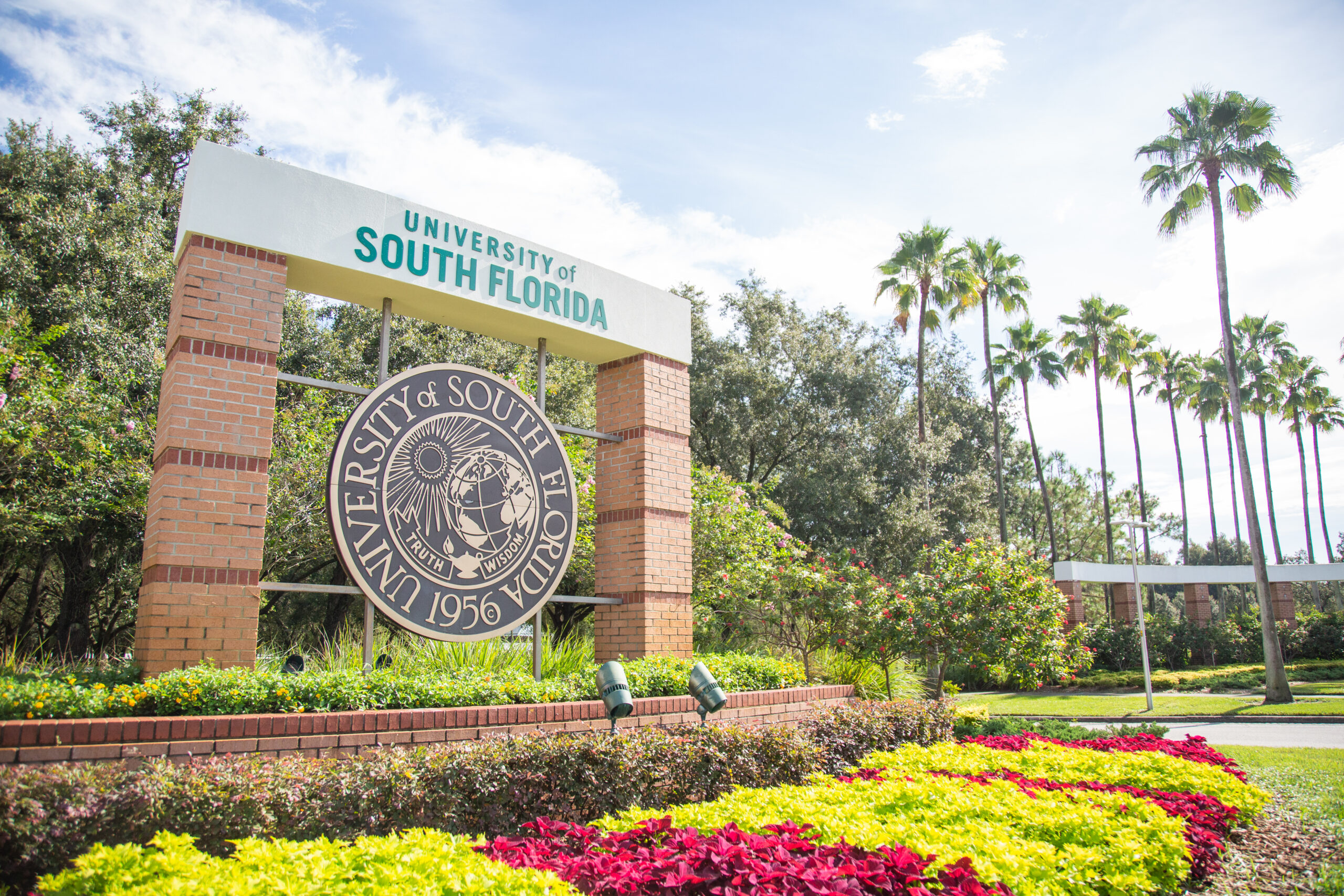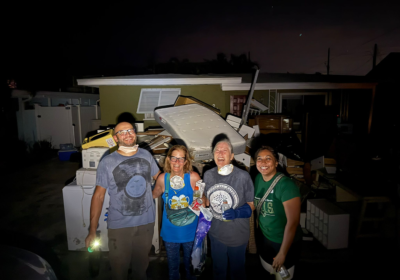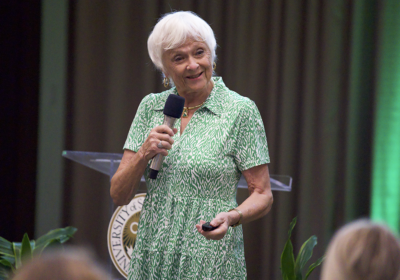Eligible students set to receive second stimulus package within the next month

Eligible students who have been financially impacted by COVID-19 can expect to receive a second federal stimulus bill in the coming weeks as the university prepares to distribute millions of dollars in federal aid.
Congress approved a second federal stimulus bill in late December, allocating $22.7 billion for higher education institutions across the country. As part of the State University System, USF is also included in that list and is set to receive $58.19 million in federal funds — $17.4 million for student aid as well as $40.77 million to cover university’s institutional expenses caused by COVID-19.
Students are expected to start receiving the first round of the second stimulus bill within four weeks. Another round will then be distributed sometime in March, according to Director of University Scholarships and Financial Aid Services Billie Jo Hamilton.
“I would say by mid to late March we should have the spring money out and kind of see where we’re at for summer,” Hamilton said. “I’m always hesitant to spend it all at once and then not have any for students who want to enroll in the summer. So … we’ve [had to] run some numbers and see how many students we think might qualify.”
Similar to the first federal stimulus bill, students can receive up to $1,000 per semester. The amount will depend on each student’s circumstances.
Hamilton said the management staff in the Financial Aid office will meet Wednesday to discuss further details regarding the distribution of federal funds to eligible students. A distribution plan for the funds will then be submitted to USF administration, including President Steven Currall, Provost Ralph Wilcox and Vice President for Student Success Paul Dosal.
“I’m thinking probably by early next week we should have a proposal written up to send up, and then once that gets approved, then we’ll work with marketing and communications on a communication plan out for students,” she said.
Last year, the university was awarded $34.8 million in total aid, of which around $17.4 million was distributed to students facing financial hardships due to the pandemic. The other half was then used to cover the university’s institutional expenses, including technology enhancements, facility enhancements and cleaning/sanitizing.
Thousands of eligible students started receiving funds last week from the first stimulus package that was saved over the past year. Hamilton said there are still “a few thousands” left from the first batch of the CARES Act fund from the spring 2020 semester. She said the remaining funds will have to be exhausted before the university begins distributing the second stimulus package.
“Hopefully that’ll take some of those folks over until we have an opportunity to kind of work through this, but we had already been audited for the first round, so we’re wanting to be very careful that we’re appropriately administering this next round of funds,” Hamilton said.
For the second stimulus bill, the eligibility criteria changed slightly. Hamilton described the second federal stimulus bill as more “liberal” compared to the one approved last year.
When the first stimulus bill was distributed in April, eligible students had to be enrolled at least half time in the spring 2020 semester as the “intent was to get people who were directly impacted by COVID-19,” according to Hamilton. For the upcoming stimulus bill, Hamilton said eligible students can be enrolled in “any semester” in order to qualify for the aid.
Students who were enrolled in full-time online courses during the spring 2020 semester were also prevented from receiving the first batch of aid. But now that the university is offering most of its coursework virtually, eligible students enrolled in fully online classes will also be considered to receive the second stimulus aid.
“We have students that are still obviously feeling the impact of [the pandemic], … so that’s why I think it’s been liberalized a little bit and opened up for students who weren’t necessarily enrolled [during spring 2020],” she said.
When distributing funds, Hamilton said priority will be given to about 16,000 Pell Grant students. While the number is high, Hamilton said not all of them are likely to request the aid.
“If all of them would indicate that they qualify, that’s $16 million right there. Now, not all of them will, obviously,” she said.
After clearing out the eligible Pell Grant students, Hamilton said more students will then be considered.
“We need to look at the Pell students first, and see how many [there are],” Hamilton said. “These students are still going to have to affirm that they were impacted, that they’ve had some kind of negative impact resulting from COVID. So, there’ll be a way to do that. So, after we get through that group, and give them time to make their requests, then we’ll probably open it up even more.”
Students who are not U.S. citizens are not eligible to receive the aid. While DACA students might also fall into that category, Hamilton said the new administration could potentially impact the eligibility criteria.
“I think it is highly unlikely that they would allow international or undocumented students … There’s a little bit of a signal we got from the Biden administration when they continued the DACA,” Hamilton said. “I think we’re hoping that we might get some leniency with this money for DACA students, but we’ll just kind of have to see.”
With the second stimulus bill, financial aid will also be able to apply each student’s funds to their OASIS account, in which they can choose to allocate their funds to cover attendance costs, including tuition fees, room and board, and books. If the student prefers to receive a refund check instead, they will be able to request that as well.
“We’re trying to get our feet under us and make sure we’ve got a simple process for students in order to indicate if they have expenses and how do they want that paid to them directly or on their student account,” she said. “So those are kind of the things mechanically [that] we’ve got to work out. Because we have so many students, we can’t do this manually. We’ve got to figure out how to automate it. So that’s kind of where we’re at today,”
In spring 2020, funds were automatically distributed to students who previously filed a Federal Student Aid (FAFSA) application, exhausted all other funding options available or were financially impacted by COVID-19, according to Hamilton. Students who were not automatically selected had to fill out an application verifying their need by providing documentation, including layoff/furlough notice, receipts of any expense related to COVID-19 and bills, as well as a statement describing the need.
Hamilton said about 6,600 applications were submitted in spring 2020. Out of the total number of applications received, about 2,300 students received the aid.
As a way to ease and facilitate the process, Hamilton said there will be a “simpler process” for students requesting the aid.
For eligible Pell Grant students, they will be able to select from their own OASIS account whether or not they’ve had expenses related to COVID-19. If they select “yes,” then they would receive an award based on their need.
After looking through the Pell Grant poll, the Financial Aid office would then email a broader group of students to offer the aid. Hamilton said those students could either finalize the process through OASIS or fill out a shorter, “less complex” application verifying their needs.
“We’re getting close to knowing who can qualify and those kinds of things, but we’ve got to then create the mechanical part behind the scenes in order to get it all set up and processed.”
Although there were leftovers from the first round of funds, Hamilton said she is unsure if the same will occur for the fall semester from the second stimulus bill.
“I don’t know [if] that will go into fall or not,” she said. “We’ll have to see how many students we have. We can identify students who would be eligible, but not all of them are going to actually say that they were impacted by COVID. We have to kind of let that first group go through and then see what we have left over.
“If we don’t allocate all of it in this semester, then whatever we have left over, we will try to get out in the summer.”
Additional reporting by Angela Cordoba Perez.






